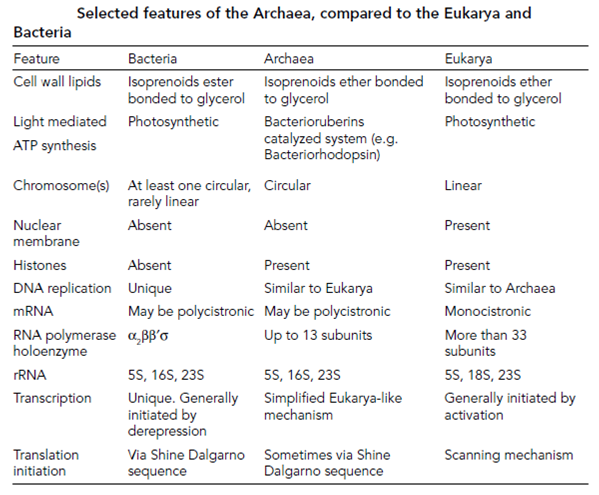The phylum Crenarchaeota
Those Crenarchaeota which have been cultured in the laboratory are extremophiles with growth optima in excess of 80?C, including Desulfurococcus, Thermoproteus, Sulfolobus and Pyrodictium. Presumed psychrophilic Crenarchaeotes suspended in Antarctic.

waters have also been identified by rRNA sequencing. The majority of the enzymology and bacteriology of this division has focused on the biotechnological applications of crenarchaeotal proteins so our overall understanding of these organisms is relatively poor.The best recognized example of the Crenarchaeota is Sulfolobus solfataricus S. solfataricus was isolated from a hot spring emerging from the volcanic area around Naples in Italy. Morphologically the cells are nondescript, irregularly shaped cocci, but this archaeon is both an extreme thermophile with a growth optimum of around 80?C and an acidophile, growing at pH 3. It has proved easy to work with in the laboratory especially as few air- borne contaminants survive in the culture medium. Work on this organism pioneered the concept in which the RNA polymerase of Archaea has more in common with eukaryotes example for the use of basal transcription factors than Bacteria.
The crenarchaeote Pyrolobus fumarii is another extremely thermophilic acidophile, and holds the current record for biological growth at high temperature. Its optimum growth temperature is between 97 and 105?C, but it can still divide at 113?C. An obligate thermophile, it will not grow below 80?C and can tolerate temperatures of up to 140?C. such as Sulfolobus it is an acidophile growing at an optimum pH of 5.5, but is also a strict anaer- obe with a requirement for sodium chloride. Such conditions cannot be establish anywhere within the terrestrial aqueous ecosystems on earth so it is unsurprising in which this bug was first isolated from a black smoker in the deep oceans. The Volcanic fissures under the sea release great amounts of sulfide, hydrogen and metals at high temperature, giving a plume of black liquid across the sea bed. As P. fumarii uses hydrogen as an energy source and sulfur as an electron acceptor instead of oxygen these are ideal conditions for growth. As well as being biochemically remarkable the morphology of the Archaeon is unusual as well. The cells themselves are disk-shaped and are interconnected with up to 100 of their neighbors through hollow tubes known as cannulae. The function of these fine tubes has not been fully explored, but it is by in which they extend into the Archaeal equivalent of the periplasm but not into the cytoplasm itself.